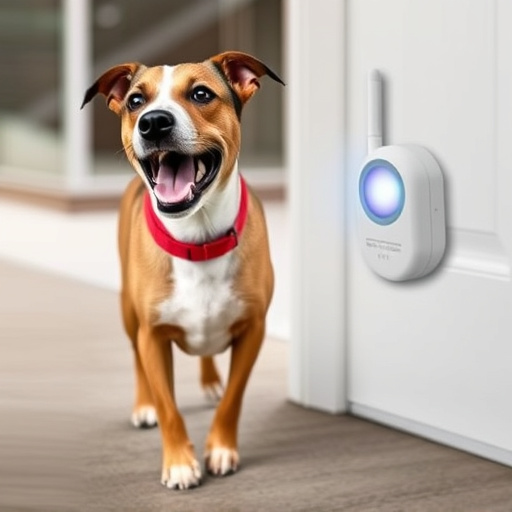Motion sensor barking dog alarms utilize advanced IR or microwave technology to create a protective field around your home, detecting and responding to unwanted animal intrusions without causing harm. These systems differentiate between pets and intruders, minimizing false alarms while effectively alerting homeowners to genuine security breaches. Proper setup, regular maintenance, and troubleshooting ensure optimal performance, providing peace of mind for pet owners and enhancing overall home security.
“Enhance your home security and protect your furry family with a pet security alarm system—a game-changer for any pet owner. This comprehensive guide explores innovative solutions, focusing on motion sensors and their role in detecting intruders while ensuring your pet’s comfort. Learn how a barking dog alarm can deter threats and keep your pets safe. Discover the benefits of integrating pet-friendly features and gain expert insights on installation, maintenance, and troubleshooting. Elevate your home security with these essential steps.”
Understanding Motion Sensors: How They Work and Their Role in Pet Security
Motion sensors play a pivotal role in modern pet security systems, especially those designed to protect against unwanted animal intrusions or aggressive behavior like excessive barking. These devices are essentially advanced detection mechanisms that can distinguish between potential threats and your beloved pets’ natural movements. Typically, a motion sensor barking dog alarm utilizes infra-red (IR) or microwave technology to create a field of perception around the protected area.
When an object, such as a curious pet, enters this field, the sensor triggers a response. In the case of a barking dog alarm, this activation could set off a loud siren or a series of barks, designed to startle and deter the animal without causing harm. The key advantage lies in their ability to differentiate between moving objects, ensuring false alarms are minimized while effectively responding to genuine security breaches.
The Power of a Barking Dog Alarm: Deterring Intruders and Protecting Pets
A barking dog, though often seen as a nuisance, can be a powerful tool in pet security. Modern innovations like the motion sensor barking dog alarm take this natural protective instinct to the next level. These systems are designed to guard your home and pets from intruders, leveraging a dog’s keen sense of hearing and their distinctive bark.
The motion sensor alarm detects any unauthorized entry into your property and triggers a loud, consistent bark that can deter potential thieves. This not only alerts you to a possible intruder but also warns your pets, giving them a chance to retreat to a safe space. The barking is designed to be both effective and humane, utilizing technology to protect without causing harm.
Integrating Pet-Friendly Features: Ensuring Comfort and Safety for Your Furry Companion
Integrating Pet-Friendly Features into a security alarm system is essential for ensuring both comfort and safety for your furry companion. Many modern systems now come equipped with sensors that are sensitive enough to distinguish between pets and intruders, preventing false alarms triggered by your beloved pet’s natural movements. For instance, motion sensors can be adjusted to account for a dog’s barking or cat’s playful antics, avoiding unnecessary distress.
A bark detection feature, often paired with a motion sensor, is particularly useful. This technology can differentiate between a pet’s normal barking and an actual alarm, minimizing disruption while ensuring your home remains secure. Additionally, some systems offer customizable settings, allowing you to set alerts or notifications when your pet enters or leaves a specific area, providing peace of mind and giving you the chance to interact with them remotely if needed.
Installation, Maintenance, and Troubleshooting: A Comprehensive Guide to Your Pet Security Alarm System
Setting up a pet security alarm system, such as a motion sensor barking dog alarm, involves careful placement for optimal effectiveness. Install sensors near entry points like doors and windows, as well as in areas where your pet frequently moves, like their play or sleeping areas. Ensure the alarm is connected to a reliable power source and that all components are securely fastened. Regular maintenance is crucial; check sensors for any debris or obstructions, replace batteries as needed, and test the system periodically to ensure it’s functioning correctly.
Troubleshooting common issues can save you time and stress. If the alarm isn’t triggering as expected, verify sensor settings and ensure there’s no pet or human interference. A barking dog alarm might be set off by small movements; adjust sensitivity levels accordingly. Consult your system’s user manual for detailed instructions on resolving technical problems, and remember to keep emergency contact information readily available for swift action if the alarm goes off unexpectedly.
